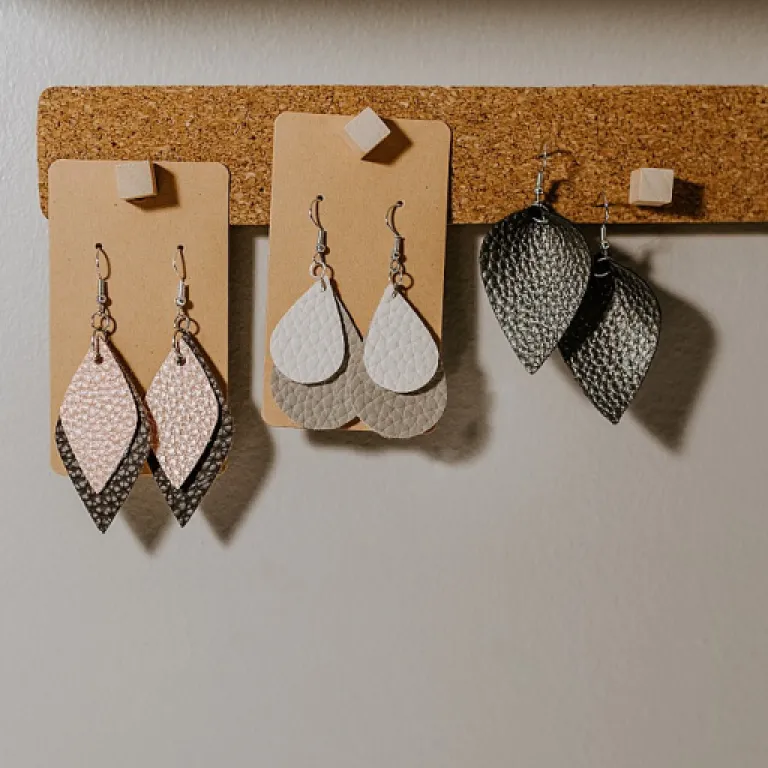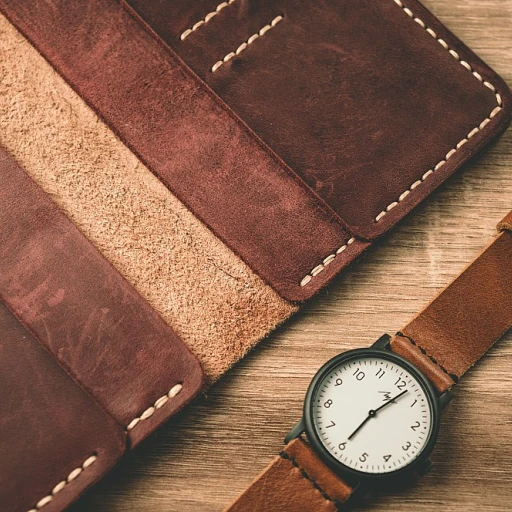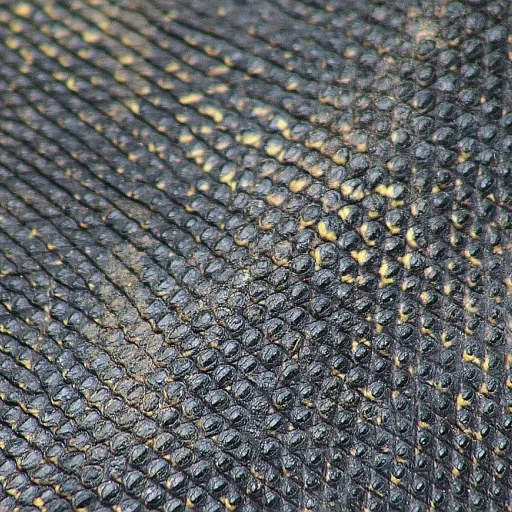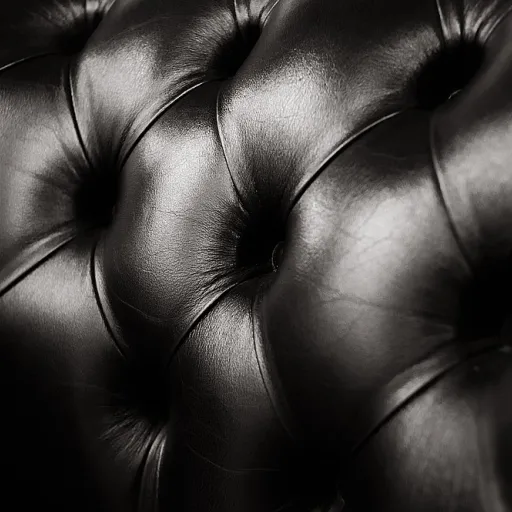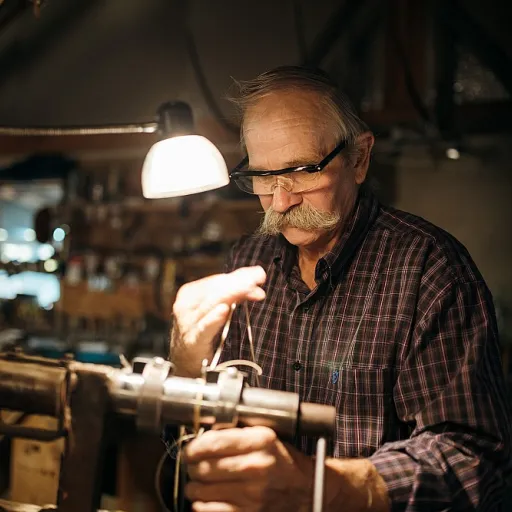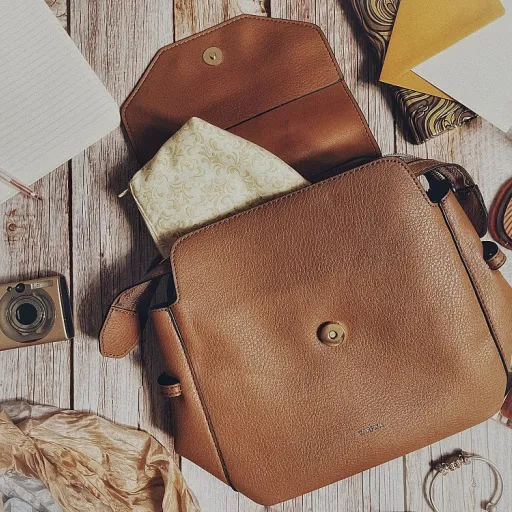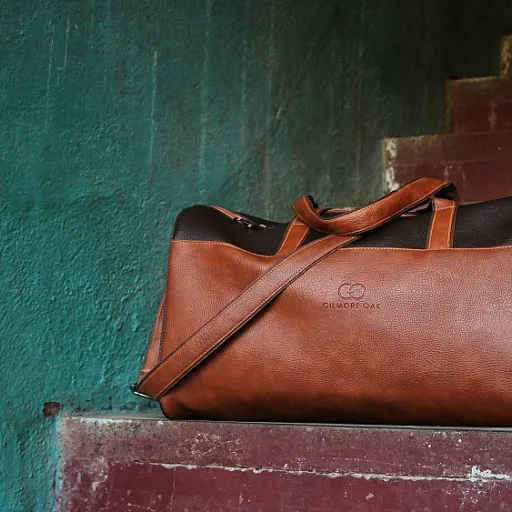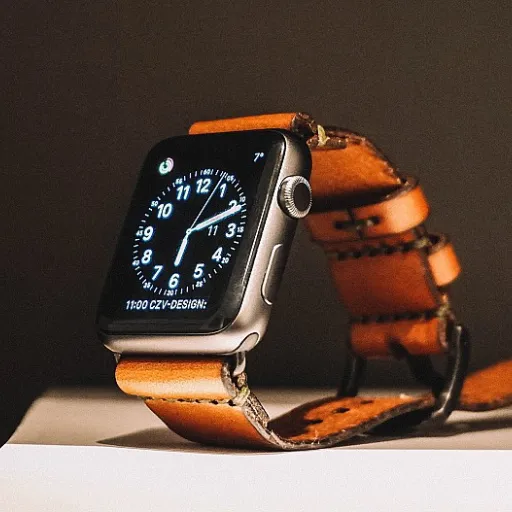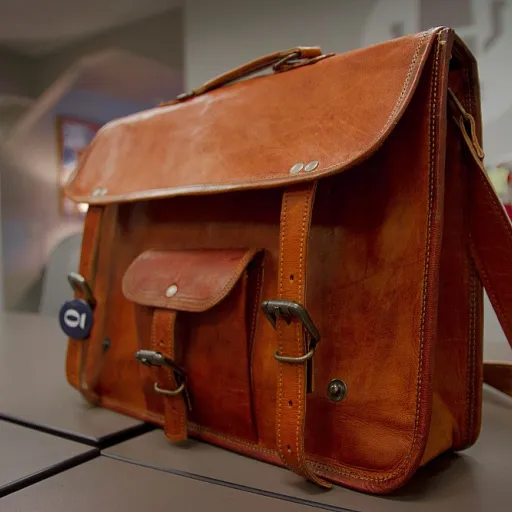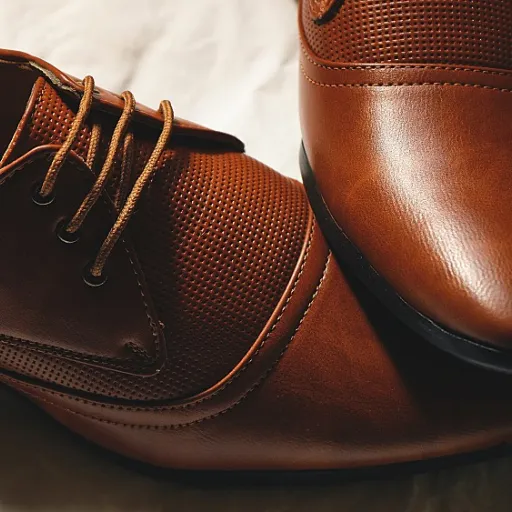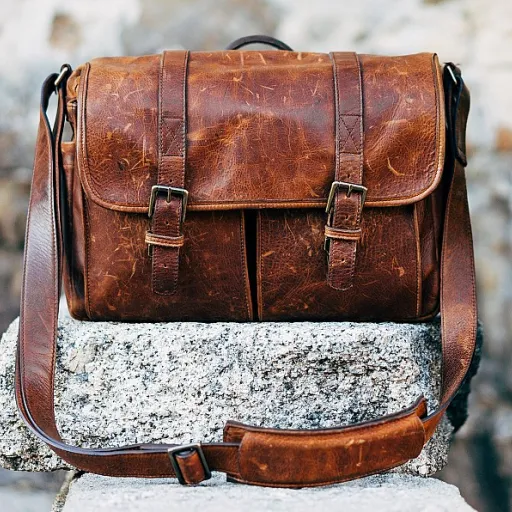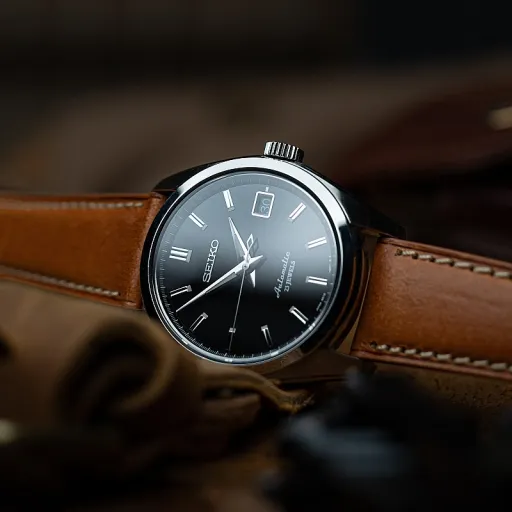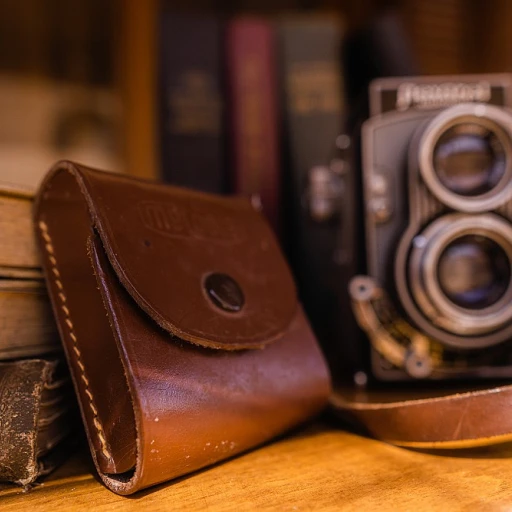
Understanding the Basics of Leather Bag Patterns
Grasping the Fundamentals of Leather Bag Patterns
Embarking on the journey of crafting leather bags begins with a solid understanding of leather bag patterns. These patterns serve as the blueprint for your creation, guiding you through the intricate process of transforming raw leather into a functional and stylish accessory. Whether you're aiming to create a classic tote or a sophisticated dopp kit, the right pattern is crucial.
Leather bag patterns come in various forms, each tailored to different styles and functionalities. From a tote pattern to a dopp kit, selecting the appropriate pattern is the first step in ensuring your bag meets your expectations in both aesthetics and utility. Patterns can be purchased at a regular price or found as a free pattern online, offering a range of options for both novice and experienced leather crafters.
When choosing a pattern, consider the unit price and the complexity of the design. Some patterns may require advanced sewing techniques, while others are more suited for beginners. It's essential to view the pattern in detail, understanding each component and how it contributes to the final product.
For those new to leather crafting, starting with a simple pattern can be beneficial. It allows you to focus on mastering basic techniques without being overwhelmed by intricate details. As you gain confidence, you can explore more complex patterns, expanding your skills and creativity.
To further enhance your understanding of leather bag patterns, consider exploring resources that offer leather bag sewing patterns in PDF. These resources provide detailed instructions and visuals, making it easier to follow along and achieve professional results.
Choosing the Right Leather for Your Bag
Factors to Consider When Choosing Leather
When embarking on the journey of crafting your own leather bag, selecting the right leather is crucial. The leather you choose not only impacts the aesthetic appeal but also the durability and functionality of your finished product.- Type of Leather: Leather comes in various types, such as full-grain, top-grain, or genuine leather. Full-grain leather retains the strongest fibers and develops a unique patina over time, making it an excellent choice for high-end bags, albeit at a higher unit price.
- Leather Thickness: Consider the thickness of the leather based on the type of bag you're crafting. A thicker leather works well for structured bags like a tote, while a softer leather is ideally suited for slouchy or foldable designs.
- Color and Finish: Visualize the final bag design and select a color that complements your style. Finishes can be anything from matte to gloss, impacting the overall look and feel.
- Source and Quality: Ethical sourcing and the quality grade of the leather also contribute to both the sustainability and the regular price point of the material.
Balancing Cost and Quality
The balance between cost and quality is pivotal when choosing leather. While full-grain leather tends to be more expensive, it often offers better longevity and luxury appeal, which can be a deciding factor if the bag is to be a long-term investment.- Budget Considerations: If you're constrained by budget, top-grain or bonded leather may be viable alternatives, offering a lower unit price while still delivering a reasonably high-quality appearance.
- Unit Price vs. Regular Price: The unit price can offer savings over the regular price when buying leather in bulk, making it an option worth exploring for larger projects or multiple patterns bag.
- Sales and Free Patterns: Keep an eye out for sales or free pattern offers, which can significantly reduce overall costs when you're just starting with leather craft.
Essential Tools for Leather Bag Crafting
Assembling Your Toolkit: The Essentials
When embarking on the journey of leather bag making, ensuring you have the necessary tools is crucial for success. A well-equipped toolkit can make the difference between a polished final product and a novice attempt. Let's delve into the essential tools you'll need to bring your leather creations to life.
- Cutting Tools: A rotary cutter or pair of sharp scissors is vital for precise pattern cutting. Precision ensures that your bag pattern aligns perfectly.
- Measuring Tools: Invest in a reliable ruler or measuring tape to guarantee accuracy when creating your tote pattern or dopp kit.
- Punching and Hole Tools: Leathercraft often requires holes for stitching and accessories. Hole punch pliers or a rotary punch tool will serve you well.
- Sewing Machine: While some traditionalists may opt for hand sewing, a sewing machine designed for heavier materials like leather can streamline the crafting process. This tool helps maintain a regular stitch when following complex patterns.
- Adhesives: Leather glue or contact cement is essential for assembling pieces before stitching. This step prevents slippage and ensures accuracy.
- Specialized Tools: Consider adding a creasing tool for aesthetic finishes and a burnishing tool to polish edges. These elevate the unit's overall appearance.
- Preservation Materials: Use a leather conditioner or sealant to protect your bag from scratches and prolong its life span, a practical investment considering the regular price of high-quality leather goods.
Crafting leather bags requires careful selection and understanding of your tools, akin to choosing the right leather for your project. Each tool plays a pivotal role in translating a pattern from concept to a tangible bag, making your investment worthy both in effort and cost. For more insights on the patterns themselves, you can explore the artistry of creating intricate bag patterns and gain a comprehensive view of this luxurious craftsmanship. Explore further here.
Techniques for Sewing Leather Bags
Seam Mastery: Key Techniques for Perfecting Leather Bag Construction
When embarking on the art of sewing leather bags, selecting the right techniques can make all the difference between a regular tote and a masterpiece. Leather bag making, with its intricacies, commands a level of precision and understanding to enhance the overall elegance of your creation. Here’s how you can navigate the world of patterns and sewing, turning your plans into striking realities. First, handling leather requires a distinct approach compared to other fabrics. Unlike fabrics, leather doesn't self-heal, meaning once you’ve made a stitch, there’s no undoing without a trace. This makes the choice of a suitable pattern bag all the more critical as it determines the form and function of your final product. Sewing Techniques:- Using the Right Sewing Machine: Investing in a reliable sewing machine tailored for leather work is invaluable. Opt for one that supports thick needles and heavy-duty thread to withstand the rigors of sewing through leather.
- Needles and Thread: The ideal needle penetrates leather effortlessly without causing damage. Pair this with a durable thread that complements your leather’s unit price and thickness, ensuring longevity and resilience.
- Stitch Types: Harnessing different stitch types can add aesthetic value. The saddle stitch, for instance, is a favorite among makers for its robustness and classic finish. If you’re keen to learn more, consider exploring The Strokes of Elegance: Unraveling the Beauty of Stitching Techniques in Luxury Leather Craftsmanship.
- Patience is Key: Leather is less forgiving than other materials. Take your time aligning patterns like a backpack or a dopp kit to ensure your sewing lines meet seamlessly.
- Test First: Always test your stitches on scrap pieces before applying them to your main project. This strategy of ‘sew before the sew’ helps you preview what works best within your pattern selection.
- Weight and Texture Consideration: Each leather type has its unique weight and texture, influencing how a pattern falls and holds shape. Consulting with seasoned leather craft experts can provide insight into these nuances.
Common Challenges in Leather Bag Making
Overcoming Obstacles in Leather Bag Crafting
Creating a leather bag is an art that requires patience and precision. However, even seasoned leather bag makers encounter challenges. Here are some common hurdles and tips to navigate them:
- Leather Thickness: Different leather types have varying thicknesses, which can affect your sewing machine's performance. Ensure your machine is equipped to handle the leather's thickness to avoid skipped stitches or broken needles.
- Pattern Alignment: Maintaining the alignment of your bag pattern is crucial. Regularly check your pattern alignment as you sew to ensure the final product maintains its intended shape.
- Stitching Consistency: Achieving consistent stitches can be tricky, especially when transitioning between different sections of the bag. Practice on scrap leather to perfect your technique before working on the actual bag.
- Tool Selection: Using the right tools is essential. Refer to the essential tools section to ensure you have the correct kit for your project.
- Handling Leather Stretch: Leather can stretch, affecting the final unit price of your product. Use interfacing or fabric stabilizers to maintain the bag's shape and structure.
- Finishing Touches: Adding personal touches like a dopp kit or a unique tote pattern can be challenging. Experiment with free patterns to find the best fit for your design.
By understanding these challenges and preparing accordingly, you can enhance your leather bag making skills and create stunning, high-quality products.
Personalizing Your Leather Bag Design
Adding a Personal Touch to Your Leather Bag
Personalizing your leather bag design is a rewarding step in the crafting process, allowing you to infuse your unique style into each piece. Whether you're working with a tote pattern or a dopp kit, customization can elevate your creation from a regular product to a cherished accessory.
Here are some ideas to consider when personalizing your bag:
- Embossing and Stamping: Use embossing tools to add initials or a unique design to your bag. This technique can give your bag a bespoke feel, making it truly one-of-a-kind.
- Choosing Unique Hardware: The hardware you select can dramatically alter the look of your bag. Opt for distinctive clasps, zippers, and rivets to complement your leather craft.
- Incorporating Fabric Linings: While leather is the star, a vibrant or patterned fabric lining can add a surprising pop of color and personality to your bag.
- Experimenting with Colors: Don't shy away from using dyed leather to create a bold statement. Consider contrasting colors for different parts of the bag to make it stand out.
- Adding Pockets and Compartments: Customize the interior layout to suit your needs, whether it's for a backpack or a dopp kit. This practical touch can enhance the functionality of your bag.
Remember, the key to successful personalization lies in the details. Each choice, from the sewing patterns to the unit price of materials, contributes to the final product. By carefully selecting each element, you ensure that your bag not only meets your aesthetic preferences but also stands the test of time.
For more insights on crafting and personalizing leather goods, consider exploring our other resources on leather bag making and pattern leather techniques. Each step in the process, from choosing the right leather to mastering sewing techniques, plays a crucial role in the overall design and functionality of your bag.
